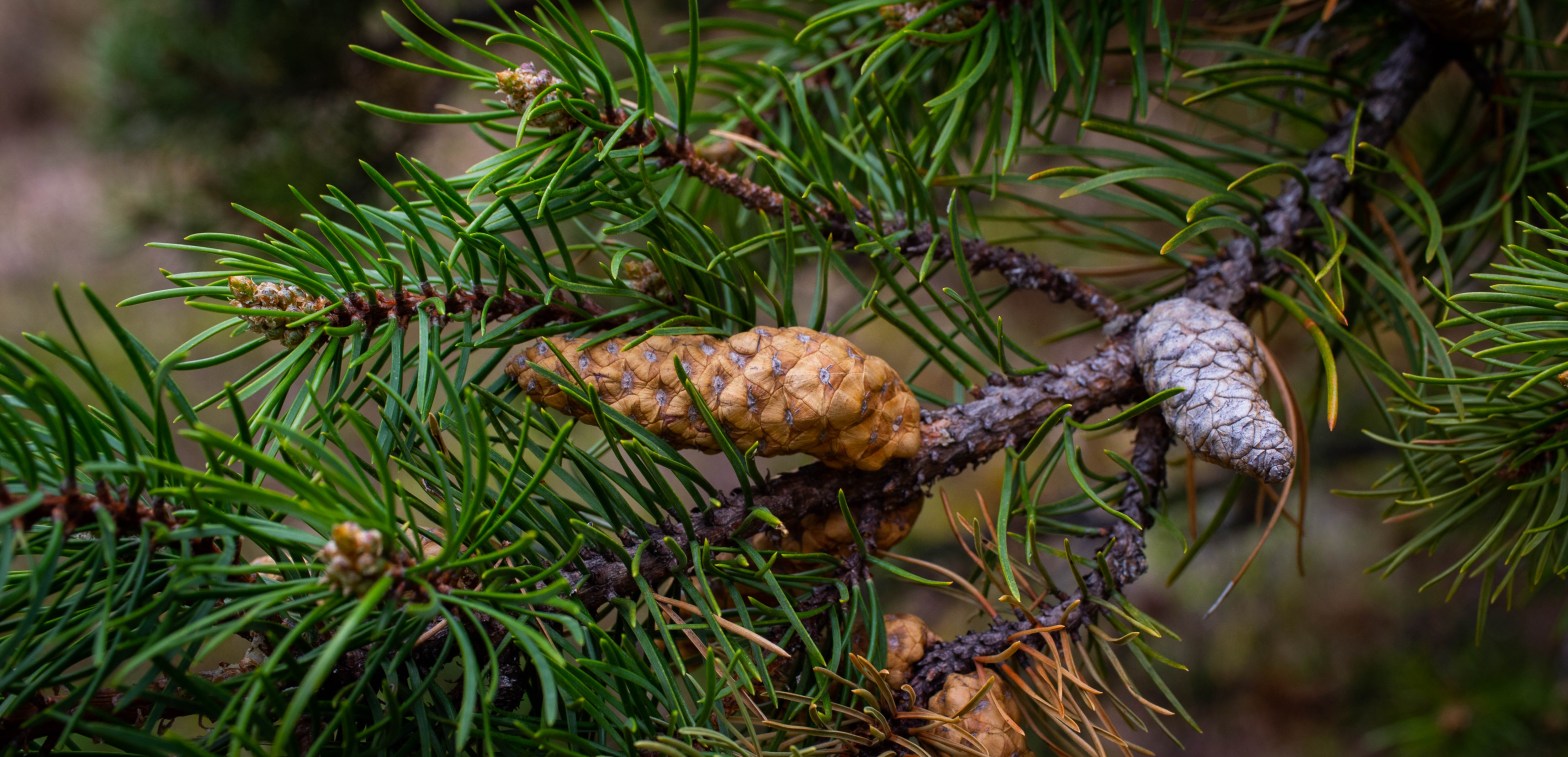Jack pine (Pinus banksiana), also known as scrub pine, occurs in very dry, nutrient poor, acidic soils in northern Michigan, Wisconsin, Minnesota, New England, and Canada. They often grow with northern pin oak and red pine. Understory plants like blueberries, bearberries, sweetfern, and lichen may occur on the forest floor. The most distinctive feature of Jack pines are their cones, which are sessile (meaning stalkless) and orangish-tan, with tightly knit scales that become grey with maturity. These cones mature in their second year and may persist more than 20 years before opening. They rely on fire to open their resin-coated cone scales to release the seeds within (1). Jack pine are important economically for their use in paper making and other lumber products. Controlled burns and periodic clearcutting are used to maintain dense stands, which are essential for the Kirtland’s Warbler.


Jack pine is probably most well-known for its association with the Kirtland’s warbler (Setophaga kirtlandii). Also known as the Jack pine warbler, the Kirtland’s warbler has an extremely limited breeding grounds in northern lower peninsula of Michigan and needs large stands of young Jack pine in order to reproduce. The Kirtland’s warbler was previously on the endangered list but due to extensive management of parasitic cowbirds and controlled burns, Kirtland’s warblers’ numbers are rising (2).

Jack pines are short lived trees and are considered to be pioneer species (3). They can grow in poor nutrient soil where other woody plants would not thrive, but are highly intolerant to shade. Threats to Jack pine ecosystems include fire suppression and the Jack pine budworm (Choristoneura pinus), which can defoliate trees. However, tree death due to budworms is a normal part of these ecosystems and can help add fuel to regulate fire regimes (4).
More photos from a Michigan Jack pine forest







Awesome info and great pictures 👍
LikeLike